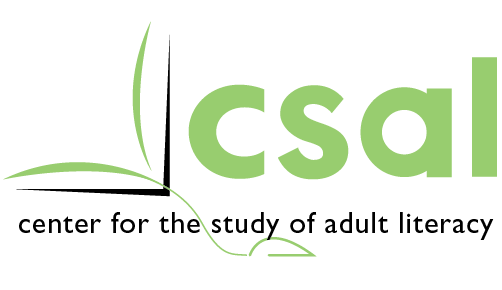Year Four Summary
Every year, nearly 3 million Americans enroll in adult literacy programs to improve their basic skills and some estimates suggest that the need is even greater. Adults in these programs want to increase their literacy skills to improve aspects of their work, family, social, and civic lives. However, we do not completely understand their underlying reading-related strengths and weaknesses, nor do we know the best curricula and teaching approaches to help them reach their reading goals. The focus of our center is to address these areas by attending to the following goals: 1) To collect data on the underlying cognitive and motivational processes that contribute to or impede the reading development of adults who read between the 3.0 and 7.9 grade equivalency levels; 2) To develop and evaluate a multiple component reading intervention for adults who read between the 3.0 and 7.9 grade equivalency levels; 3) To design and collect data from supplemental studies that are aligned with the overall goals of CSAL and are relevant to significant issues in adult education; 4) To engage in national leadership activities that serve the needs of adult education researchers, policymakers, practitioners, and stakeholders; and 5) To disseminate findings of this work.
This report covers our activities from June 1, 2015 through May 31, 2016. During this time period, we engaged in the following activities: a) Phase 1 Data Entry/Cleansing/Analyzing, b) Completing feasibility studies, c) Modifying the intervention and assessments based on our feasibility studies, d) Implementing pilot studies, e) Conducting supplemental and additional studies, and f) Performing other center activities.
Preliminary reports indicate that 544 people were enrolled in Phase 1 (264 in Toronto and 280 in Atlanta), with 92% of students taking 33 or more of the 37 tests with only 6% taking less than half the battery. The majority of our participants are female and native speakers of English with a mean age of 36.8 years (range = 16-71; SD=14.2). A cursory look at the mean performance of the Phase 1 participants indicates that they are deficient in all tested domains. Their mean grade equivalency performance ranges from a low of 1.0 GE (Blending Words and Phoneme Isolation subtests of the CTOPP) to a high of 7.1 GE on sight word reading (TIWRE). Their mean age equivalency ranges from a low of 6-0 AE on the Blending Words and Phoneme Isolation subtests of the CTOPP to a high of 11.6 AE on the Retrieval Fluency subtest of Woodcock Johnson and the Meaning from Context subtest of the CASL.
During this year, we completed our feasibility classes with participants showing pre-post gains on reading-related tests. In January and February, we began our pilot classes. Our intervention is a hybrid 100-hour program consisting of 4 components: 30 Adult PHAST lessons, 31 Adult PACES lessons, 35 AutoTutor lessons, and Independent Reading. By mid-July, post testing will be completed.
Examples of other center activities described in this report include website maintenance (csal.gsu.edu), supplemental studies, maintenance of an email distribution list, and presentations at conferences.
